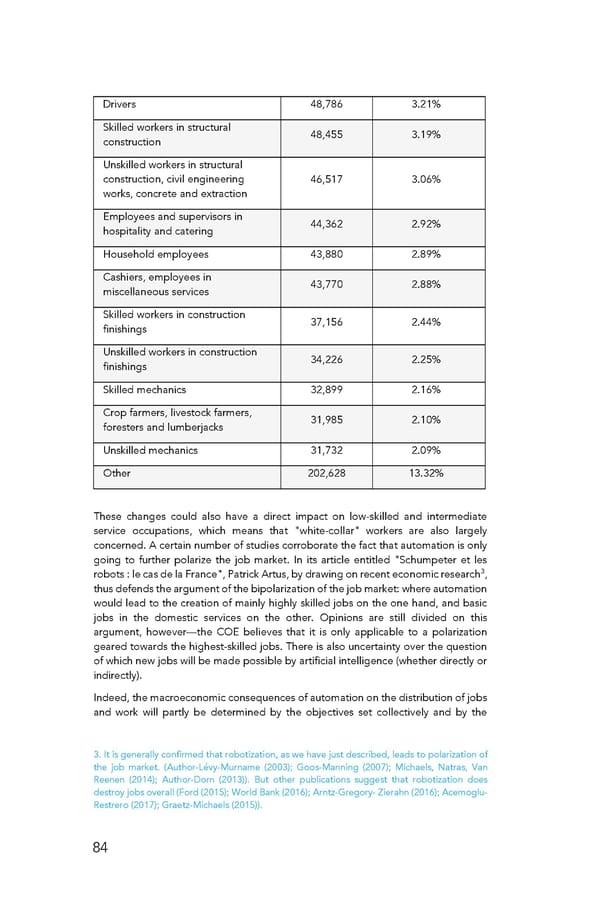Drivers 48,786 3.21% Skilled workers in structural 48,455 3.19% construction Unskilled workers in structural construction, civil engineering 46,517 3.06% works, concrete and extraction Employees and supervisors in 44,362 2.92% hospitality and catering Household employees 43,880 2.89% Cashiers, employees in 43,770 2.88% miscellaneous services Skilled workers in construction 37,156 2.44% finishings Unskilled workers in construction 34,226 2.25% finishings Skilled mechanics 32,899 2.16% Crop farmers, livestock farmers, 31,985 2.10% foresters and lumberjacks Unskilled mechanics 31,732 2.09% Other 202,628 13.32% These changes could also have a direct impact on low-skilled and intermediate service occupations, which means that "white-collar" workers are also largely concerned. A certain number of studies corroborate the fact that automation is only going to further polarize the job market. In its article entitled "Schumpeter et les robots : le cas de la France", Patrick Artus, by drawing on recent economic research3, thus defends the argument of the bipolarization of the job market: where automation would lead to the creation of mainly highly skilled jobs on the one hand, and basic jobs in the domestic services on the other. Opinions are still divided on this argument, however—the COE believes that it is only applicable to a polarization geared towards the highest-skilled jobs. There is also uncertainty over the question of which new jobs will be made possible by artificial intelligence (whether directly or indirectly). Indeed, the macroeconomic consequences of automation on the distribution of jobs and work will partly be determined by the objectives set collectively and by the 3. It is generally confirmed that robotization, as we have just described, leads to polarization of the job market. (Author-Lévy-Murname (2003); Goos-Manning (2007); Michaels, Natras, Van Reenen (2014); Author-Dorn (2013)). But other publications suggest that robotization does destroy jobs overall (Ford (2015); World Bank (2016); Arntz-Gregory- Zierahn (2016); Acemoglu- Restrero (2017); Graetz-Michaels (2015)). 84
 For a Meaningful AI - Report Page 84 Page 86
For a Meaningful AI - Report Page 84 Page 86